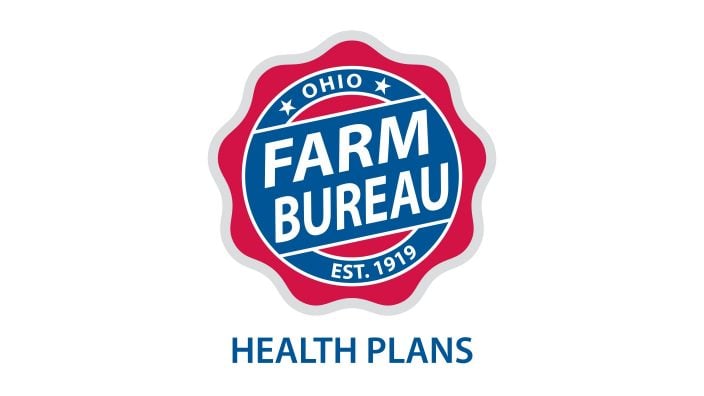Applications for Ohio Farm Bureau Health Plans now available
Members have three ways to apply: contacting a certified agent, calling 833-468-4280 or visiting ohiofarmbureauhealthplans.org.
Read MoreCultivating the soybean and corn crops, as well as harvesting wheat is what keeps Ron Burns busy during the summer months. This is the second installment of “a year in the life” of Union County farmer Ron Burns and his fiancée Melissa Downerd, from planting and harvesting crops to everything in between.
 Staying on top of plant management by walking fields every four days helps my operation be proactive toward a successful season reaching our crop goals. Pictured here are organic soybeans.
Staying on top of plant management by walking fields every four days helps my operation be proactive toward a successful season reaching our crop goals. Pictured here are organic soybeans.
In 2016 we had a great harvest window for high-quality wheat that will be used in food products. We even took out a field at 13.5 percent goal moisture. This saved drying time and expense and gave us a product to market. The wheat was sold to a company that distributes to mills to supply bread you would find in your local grocery store.
 Spreading composted chicken manure after wheat harvest is part of our plan to add nutrients back to the soil that may have been depleted from the wheat crop. The nutrients will be in soil and held in place with cover crop plants over the winter and then will be available for the corn plants next year.
Spreading composted chicken manure after wheat harvest is part of our plan to add nutrients back to the soil that may have been depleted from the wheat crop. The nutrients will be in soil and held in place with cover crop plants over the winter and then will be available for the corn plants next year.
 Cultivating soybeans is critical every seven to 10 days after the plants are established. This keeps the space between rows clean and helps with weed suppression.
Cultivating soybeans is critical every seven to 10 days after the plants are established. This keeps the space between rows clean and helps with weed suppression.
The grain head on the combine is greased and inspected every day to ensure minimal seed loss and preventive maintenance. Some wheat chaff is baled, but I like to leave as much residue on the field as I can to build organic matter in the soil.
 Wheat fields are walked and inspected to time harvest just right. I like to stay ahead of upcoming rains if possible to reduce the chance of disease, sprouting or other yield and quality loss possibilities.
Wheat fields are walked and inspected to time harvest just right. I like to stay ahead of upcoming rains if possible to reduce the chance of disease, sprouting or other yield and quality loss possibilities.
 Harvesting wheat when it’s low in moisture is important. In 2015 we had a large rain move in and I decided to harvest the crop when the moisture gauge was at 21 percent. We ended up pulling wagons home in the rain and then had to dry down the wheat to an optimal 13.5 percent. This means we had to handle the wheat two more times than planned, but it was worth it. We hit our goal of food grade wheat with no sprouting or disease.
Harvesting wheat when it’s low in moisture is important. In 2015 we had a large rain move in and I decided to harvest the crop when the moisture gauge was at 21 percent. We ended up pulling wagons home in the rain and then had to dry down the wheat to an optimal 13.5 percent. This means we had to handle the wheat two more times than planned, but it was worth it. We hit our goal of food grade wheat with no sprouting or disease.
Read more:
Feature image: The freshly mowed field in front of the tasseled corn in the distance is wheat residue. Weeds are being managed prior to the cover crop being planted.
Photos by Dave Gore


Members have three ways to apply: contacting a certified agent, calling 833-468-4280 or visiting ohiofarmbureauhealthplans.org.
Read More

Bill Patterson, Cy Prettyman and Adele Flynn will continue to serve as officers for Ohio Farm Bureau Federation.
Read More

Delegates discussed many topics impacting agriculture including farmland preservation, local foods, and succession planning.
Read More

Twenty-six farmers govern the state’s largest farm and food organization.
Read More

The 2025 recipients are Fred Cooke (posthumous) of Richland County, Marvin Dietsch of Williams County, Steven Knollman of Hamilton County and Michele Miller (posthumous) of Ottawa County.
Read More

Nathan and Jill Parriman grow seasonal crops, including Christmas trees, pumpkins and cut flowers, providing U-cut experiences that invite customers to engage directly with agriculture.
Read More

The 2025 Distinguished Service Award recipients are Craig Adams, Mike Townsley, and Kellogg Farms, Kurt Farms and Stateler Family Farms.
Read More

Ohio Farm Bureau Treasurer Adele Flynn participated in the meeting, representing Ohio farmers.
Read More

For Ohio and PJM region, the outlook is reassuring—ample reserves and strong planning should keep the power on.
Read More

The average price for a classic holiday feast for 10 in Ohio will cost $55.87.
Read More